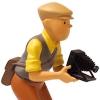ILFORD VC and Kentmere VC paper curl
-
Recently Browsing 0 members
- No registered users viewing this page.
-
Similar Content
-
- 20 replies
- 4,145 views
-
Paper White
By mikozia,
- 0 replies
- 151 views
-
- 1 reply
- 466 views
-
- 9 replies
- 3,170 views
-
- 33 replies
- 9,814 views
-




Recommended Posts
Join the conversation
You can post now and register later. If you have an account, sign in now to post with your account.
Note: Your post will require moderator approval before it will be visible.